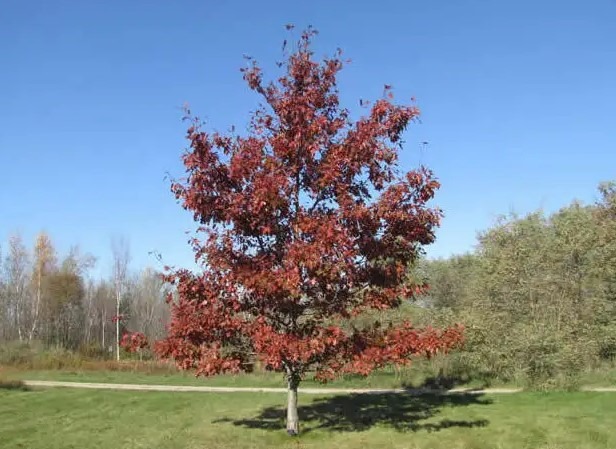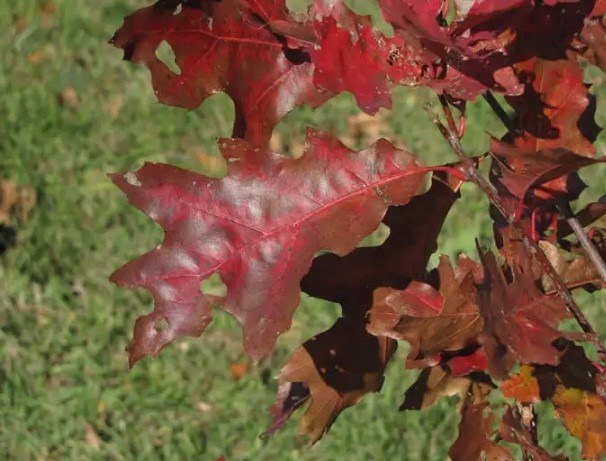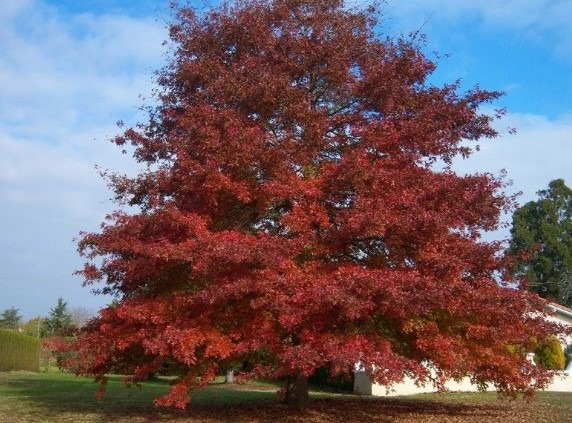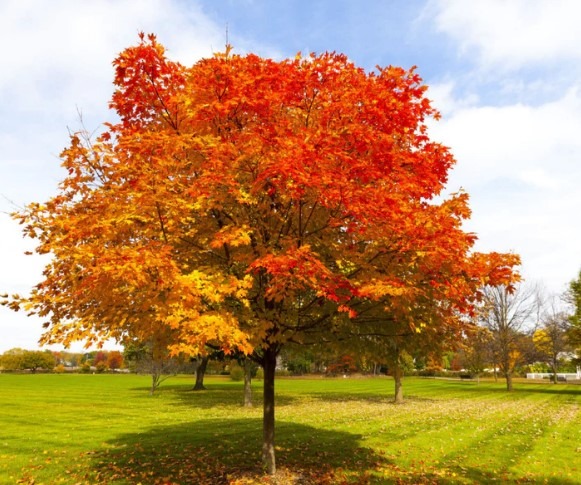Home
Unraveling the Shumard Oak Pros and Cons

The Shumard oak, Quercus shumardii, has earned its fame in the horticultural world as an appealing landscaping choice. It captures hearts with its stunning beauty and resilience, yet like any other tree species, it carries a set of challenges that are worth considering. This article, penned by experienced arborists and passionate horticulturists, seeks to deliver a comprehensive and balanced view on Shumard Oak Pros and Cons.
Table of Contents
Shumard Oak Benefits: Where Beauty Meets Resilience
Possessing a rich array of beneficial attributes, the Shumard oak makes a majestic statement in any landscape. Let’s take a closer look at some of these advantages.
Rapid Growth and Longevity
One of the most compelling advantages of the Shumard oak is its growth rate. Once established, these trees can grow rapidly, with rates reaching up to 2 feet per year. Moreover, they are long-lived trees, often surviving over 300 years. This combo of swift growth and longevity promises a lifetime of shade and beauty.
Unparalleled Beauty
Shumard oaks have an undeniable aesthetic appeal. Their large lobed leaves, vibrant green in the summer, transition to brilliant reds in autumn, adding a splash of color to your landscape. Furthermore, their majestic, spreading canopy creates an impression of grandeur and stability.
Disease Resistance
Shumard oaks are widely admired for their impressive disease resistance. They are less prone to ailments that commonly afflict other oak species, like oak wilt, making them a robust and reliable choice for your garden.
Wildlife Habitat
Another significant benefit of the Shumard oak is its ability to provide a valuable wildlife habitat. Their acorns are a favorite food source for numerous bird species and small mammals, fostering a rich biodiversity within your landscape.
Delving into Shumard Oak Drawbacks

While the advantages of Shumard oaks are enticing, it is equally important to acknowledge the cons associated with this tree species. After all, an informed decision is always a wise decision.
Site Specificity
One of the main disadvantages of Shumard oak trees is their site specificity. They prefer well-drained, fertile soils and are less tolerant of compacted, poorly drained soils. Therefore, location selection is critical when planting a Shumard oak.
Pruning and Maintenance
Shumard oaks require some degree of maintenance to thrive. Regular pruning during the tree’s formative years can improve its structural integrity and aesthetic appeal. However, pruning needs to be done correctly to avoid harming the tree.
Size Considerations
The substantial size of a fully grown Shumard oak can be a disadvantage in some settings. These trees can reach up to 60 to 70 feet in height, making them unsuitable for small gardens or landscapes with overhead power lines.
Shumard Oak Versus Other Oak Species

Comparing the Shumard oak to other oak species, one could argue that its fast growth rate and disease resistance give it a significant edge. However, it is worth noting that other species might be more adaptable to a range of soil conditions.
Shumard Oak Leaf Identification and Planting Tips

Shumard oak leaves are distinct, having deep lobes with bristle-tipped teeth. As for planting tips, always consider the tree’s mature size, select a well-drained site, and ensure proper spacing from buildings and other structures.
Frequently Asked Questions About Shumard Oak Pros and Cons
What are the main characteristics of Shumard oak trees?
Shumard oaks are large, deciduous trees with a rapid growth rate and high disease resistance. They have deeply lobed leaves that turn bright red in the fall and produce acorns that wildlife adore. They grow to a substantial size of 60-70 feet tall, with a broad, spreading canopy.
How do I maintain a Shumard oak tree?
Maintenance for a Shumard oak mainly includes regular pruning, especially during its formative years to develop a robust branching structure. You should also make sure it’s planted in well-drained soil, provide ample watering during dry periods, and monitor for any signs of disease or pests.
Can you compare Shumard oak to other oak species in terms of pros and cons?
Compared to other oaks, Shumard oak tends to grow faster and exhibits a high resistance to diseases like oak wilt, giving it a considerable advantage. However, it’s slightly less adaptable to various soil conditions than some other oak species, which could be a potential drawback depending on your location.
What is the natural habitat of Shumard oak trees?
Shumard oaks are native to the Eastern and Central United States. They thrive in well-drained, fertile soils found in bottomlands, floodplains, and along streams.
What are some tips for planting Shumard oak trees?
When planting a Shumard oak, choose a location that receives full sunlight and has well-drained soil. These trees need space, so ensure the planting site is big enough to accommodate the mature size of the tree. Also, planting in early spring or fall is usually the best time as it allows the tree to establish roots before the stress of summer heat or winter cold.
Are there any specific pruning techniques for Shumard oak trees?
Pruning should be done in late winter or early spring, before new growth starts. Remove dead, diseased, or crossing branches to improve the tree’s health and appearance. Young trees should be pruned to develop a strong central leader (main trunk) and good branch structure.
Do Shumard oaks provide a suitable wildlife habitat?
Absolutely! The acorns of Shumard oaks are a high-quality food source for many birds and mammals. The tree’s spreading branches also provide excellent cover and nesting sites for wildlife.
Also Read: E3 Spark Plugs Pros and Cons: A Comprehensive Review
Conclusion
In conclusion, the Shumard oak is a captivating tree, marrying stunning aesthetics with a host of practical Shumard Oak Pros and Cons. Though it has its set of challenges, with the right care and attention, this tree can become a treasured centerpiece in your landscape. Remember, it’s always about finding the right tree for your specific site conditions and maintenance capacity. Should the Shumard oak align with these, it’s an excellent choice, promising a rewarding, long-term relationship with nature’s splendor.
Check more posts
Slope Unblocked 67
Wheat Straw Plates
Smoking Lavender
Osteostrong

-

 Health5 years ago
Health5 years agoAdvantages and Disadvantages of Milk
-

 Tech4 years ago
Tech4 years ago6 Tips to Improving E-Commerce Websites
-

 Home5 years ago
Home5 years agoAdvantages and Disadvantages of Village Life in Points
-

 Travel5 years ago
Travel5 years agoAdvantages and Disadvantage of Travelling
-

 Sports3 years ago
Sports3 years agoThe benefits of playing an online live casino
-

 Tech5 years ago
Tech5 years ago10+ Advantages and Disadvantages of Mobile Phones in Points
-

 Tech5 years ago
Tech5 years agoEssay on Advantages and Disadvantages of Offline Shopping
-

 Tech5 years ago
Tech5 years ago8+ Advantages and Disadvantages of Motorcycle |Having Bike